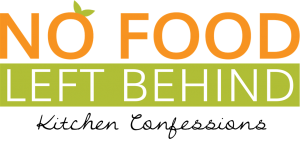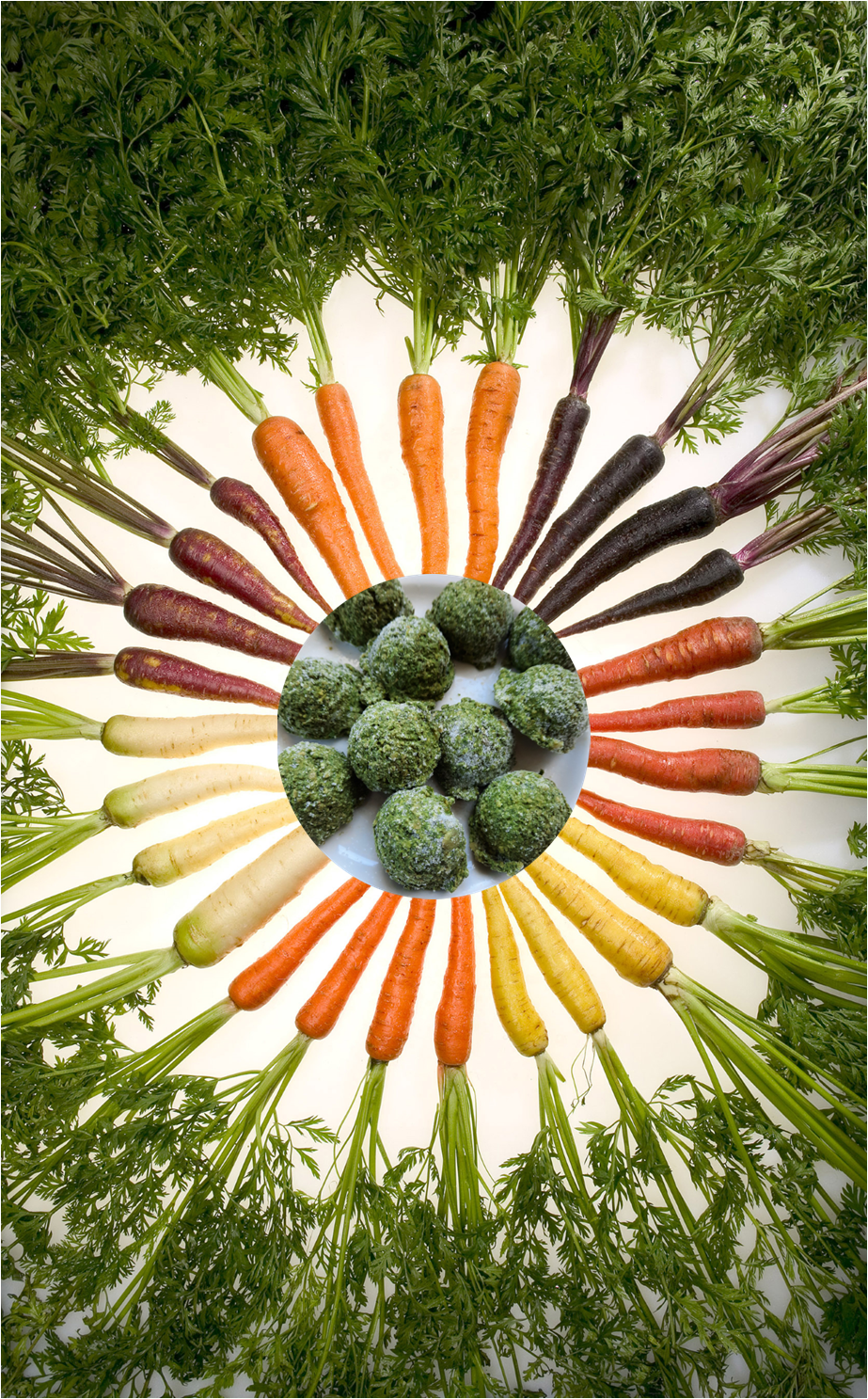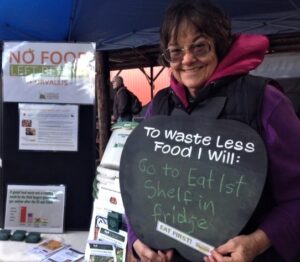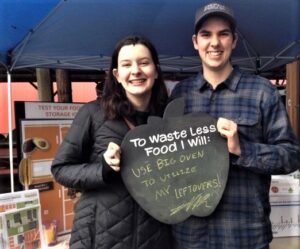Greetings, Conscientious Food Consumers!
We’re still giddy over the response to our first-ever Leftovers Recipes Contest (Drawing), in which local Conscientious Chefs shared creative methods for wasting less food and money at home, one meal at a time! Thanks again to all who participated.
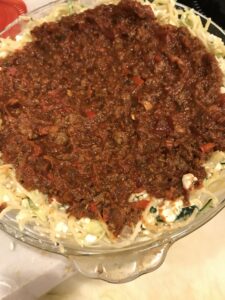
We’re pleased to highlight in this blog some of our Recipe Contest chefs who are tossing fewer items into the compost and making more soups, casseroles, pesto, curry and muffins — thus demonstrating a “zero waste” kind of mindset. Be sure to check out our new Recipes for Leftovers section, which we hope will provide you with some fresh inspiration as well as more $aving$ for your grocery budget!
Remarkably, one of our original drawing winners donated her gift card — so we were delighted to be able to do a second drawing. Congrats to our “Runner Up” drawing winner Emily S. of Philomath, whose leftover Spaghetti Pie has also been uploaded to our new Recipes section.
(Note: you’ll see quotes around the term “zero waste” because I’m using it rather loosely.)
FROM LESS WASTED FOOD TO “ZERO WASTE”
For many of us, even if we’re actively pursuing a more sustainable lifestyle, “zero waste” may sound a little intimidating.
You’re already being more conscious about wasting less food at home. You’re already working the 3R’s: Reduce, Reuse, Recycle. What more can you do? You can step it up and place added focus on “Reduce,” which means preventing waste in the first place. With everything we use and consume — especially in our own kitchens — we can all develop a “zero waste” mindset that asks:
-
- “What can I do with this before it becomes part of the waste stream?
- Can I eat it/reuse it/compost it/recycle it first?”
In Kitchen Confessions terms: how can you do more with the food you already have? How can you use parts of the food you don’t typically think of as edible, like cheese rinds? Produce peels, rinds, stalks, tops and bottoms? Bones and coffee grounds? Keep scrolling, Conscientious Food Consumers!
COMPOSTING VERSUS ZERO WASTE
Most of the time, we on the NFLB staff downplay composting in our messaging and outreach, even though we do actively support the practice. Why downplay it? Composting can make it easy for us to excuse our wasting habits. If the food that got composted was edible in the first place, then technically it was still wasted! See our page: “What About Composting?”
Given the scale of the food waste problem, composting is “inextricably linked” with zero waste. But the real goal with “zero waste” is to maximize, as much as possible, the resources represented in every part of our food.
Producing soil amendment from spoiled and/or undesirable food is certainly better than sending that inedible organic waste to the landfill. In Corvallis and Philomath, residents have the option of curbside composting through Republic Services, while OSU’s Extension Service offers advice on getting started with backyard composting.

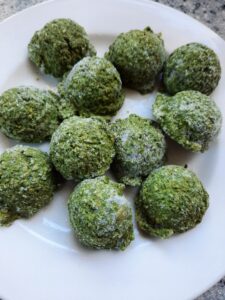
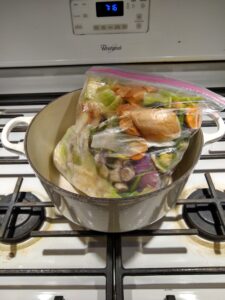
SOME “ZERO WASTE” CONTEST RECIPES
- Donna T.’s Carrot Top Pesto (shown as handy frozen single portions) and Watermelon Rind Pickles, using those parts that typically go to waste.
- “I haven’t paid for vegetable stock in years,” boasts Sarah B. when introducing her Vegetable Scrap Soup Stock. Her family’s stock-from-scratch doesn’t need aseptic packaging and uses veggies and trimmings that others might toss: “any sad and wilted individuals from the bottom of your veggie crisper,” carrot or parsnip ends/peels, onion skins/ends, mushroom stems, cauliflower/cabbage cores/leaves, kale stems, or celery stumps.
- “Almost anything goes!” says Rebecka W. of her One Pot Adaptable Curry — a recipe she “adapts” with odds and ends from her spice cabinet as well as whatever she finds at fridge clean-out time.
- Mali G. blends up random fruits/veggies, and found a great new way to use the byproduct with her Juice Pulp Muffins!
- Donna P. prepares her Everything Ramen Soup with random leftovers and stock from “scraps that I am cutting off of the produce, like onion butts, carrot tops, chard stems, mushroom stems, bits of ginger that have gotten tough, meat bones — pretty much anything that isn’t funky or rotten…”
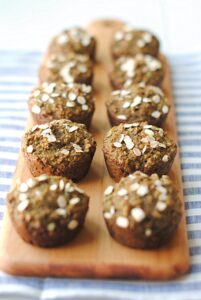
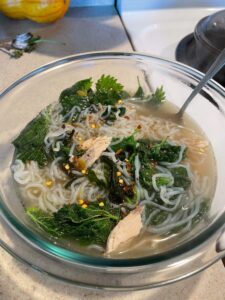
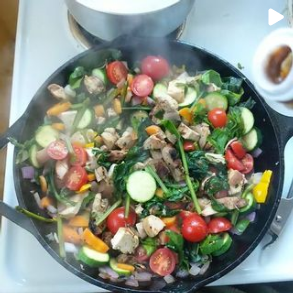
TODAY’S KITCHEN CONFESSION:
I CONFESS that I am still learning what “zero waste” means!
I must also FRANKLY CONFESS that in this blog, I’ve been using the term rather loosely to describe recipes with ingredients that would normally get tossed or composted. Assuming these dishes were completely consumed (either by people or people food-loving animals), they might then qualify as truly “zero waste” recipes!
In the waste management and recycling industries, “zero waste” is a complex topic. It’s also a growing global movement that is fundamentally altering human attitudes and practices regarding our relationship to natural resources, consumption and waste disposal. Learn more about the “zero waste” movement!
A few recommended resources:
- The Zero Waste Home Guide;
- The Corvallis/Albany Zero Waste Group on Facebook;
- “Waste Free Kitchen Handbook” by Dana Gunders (Chronicle Books, 2015);
- “My Zero Waste Kitchen: Easy Ways to Eat Waste Free” (DK Books, 2017);
- Food Preservation how-to (our great-grandparents’ zero food waste approach that’s now back in style), by OSU Extension Service; and
- Zero Waste USA, founded in 1996 as the GrassRoots Recycling Network.
As a project of the Waste Prevention Action Team of the Corvallis Sustainability Coalition, the NFLB campaign and Kitchen Confessions are here to help you (and ourselves) “step it up” along the path to zero waste!
